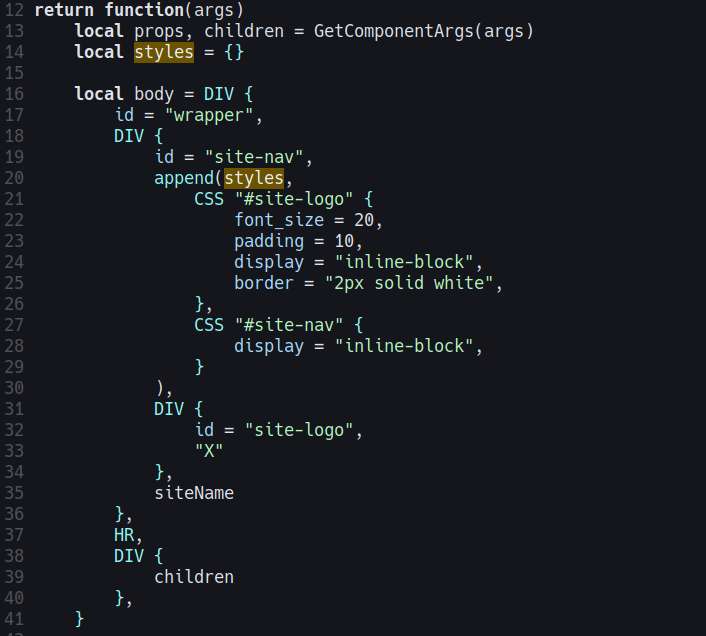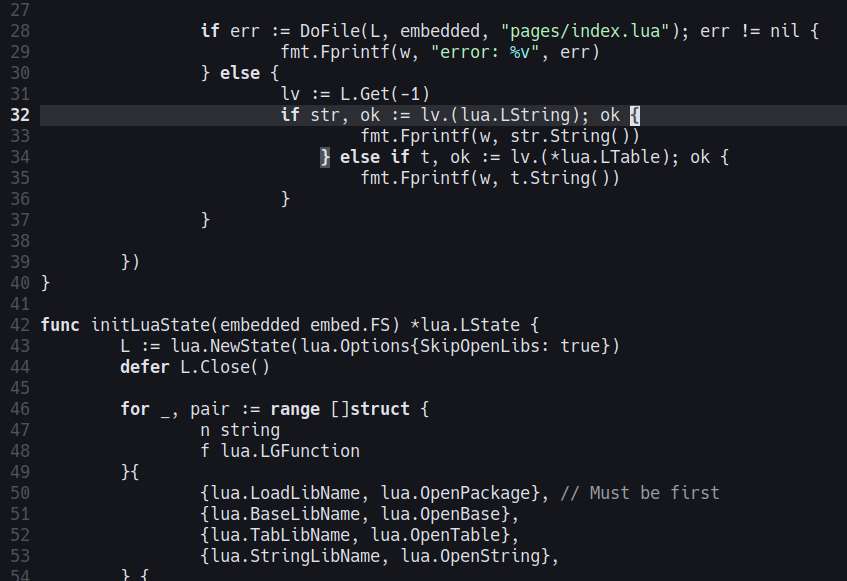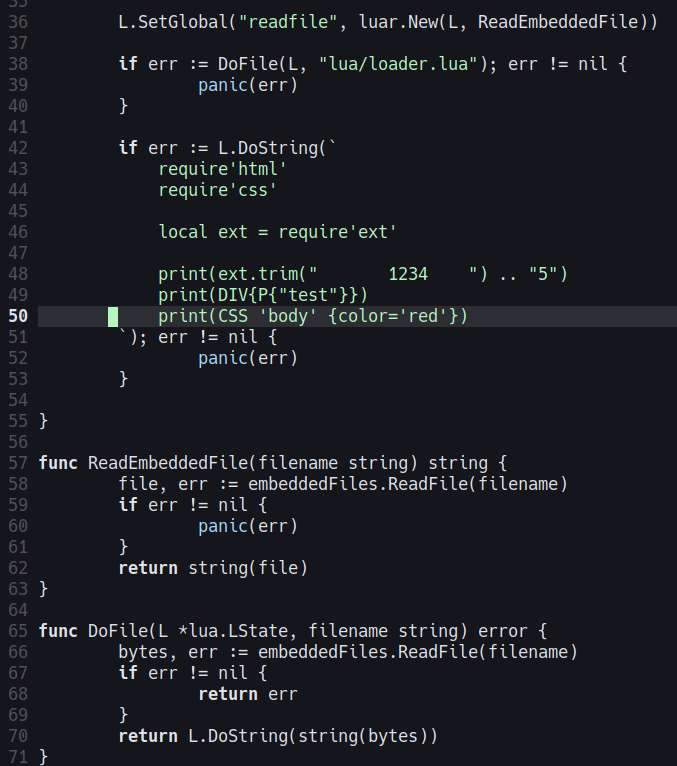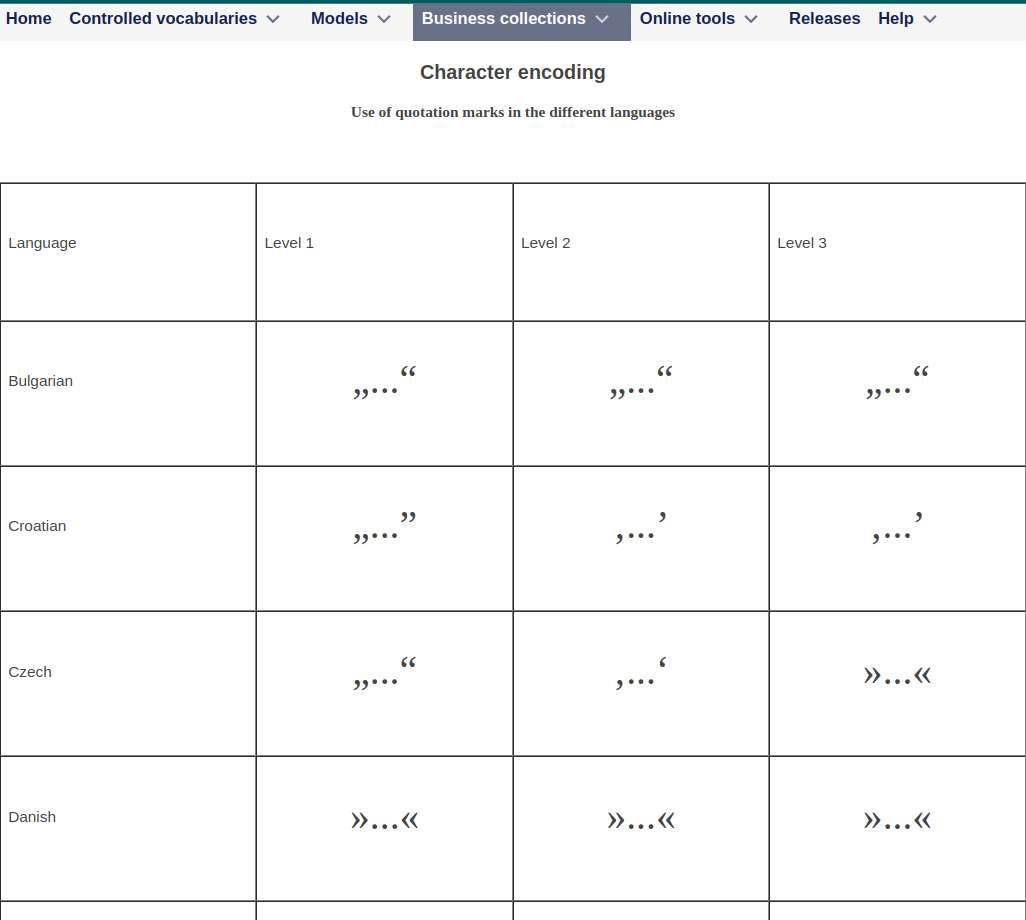There fixed the __tostring problem by using L.CallByParam. I also had to create my own version of dofile since the one provided by gopher-lua doesn't allow setting the chunk name, and seeing chunk name is important when debugging.
I considered using htmz, but since hacker news doesn't have a lot of UI interactivity, it's not needed for this toy project.
I was wondering why I keep getting a nil pointer dereference, as it turns out, I'm closing L.close() before I could even use L. Now my problem is why the __tostring metamethod isn't being called from the go code. I'm currently looking for code examples how to do that, or just examples how to better use the gopher-lua API.
Worked on getting the lua environment to work with gopher-lua. The custom loader solution works fine, now I just to figure out a way to structure the web application. For demostration purposes, I'll just create a simple HN clone.
Oh, I see I what's going on here:
l(x) - b = f'(a)(x - a)
l(x) = f'(a)(x - a) + bWhat I want:
- scoping of variable for each functions
- dependent variables should be clear whose variable it's depending on
- still have the freedom of doing algebraic manipulations (or equational reasoning? as the FP guys say)
lol, I didn't realize my computer crashed, all input was unresponsive, but it was still playing the same tune 3 second tune in a loop. Oddly enough, it still quite catchy, so I didn't notice until I tried moving my mouse.
Anyway, I was on my notebook wondering what the geometric interpretation of negative exponents. n^m makes sense, it just multiplication. But what about n^-m, it's not apparent at first, but it's just equal division. What about n^(m^-1)? n^0.5 is square root, but what does that mean? Isn't that division as well? Maybe unequal division?
As it turns out, I don't really understand the basic, fundamentals of math. But why stop at multiplication and division. Maybe there's a weird arithmetic operator that has useful properties. Base-2 has `xor`, `nand` and other operators.
What if xor and others was generalized to arbitrary base? So instead of bit-wise pairing, on decimal, it would be digit pairing. What properties woud those operator have?
Can I define some weird operators too? Programmers after all do that all the time, well, haskell programmers do at least.
I will set aside these thoughts for now, I have a calculus book to read.














